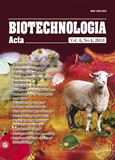ISSN 2410-7751 (Print)
ISSN 2410-776X (Online)

"Biotechnologia Acta" v. 6, no. 4, 2013
https://doi.org/10.15407/biotech6.04.016
Р. 16-19, Bibliography 8, English
Universal Decimal classification: 615.37:615.45
ON THE NOTION OF SYNERGY OF MONOCLONAL ANTIBODIES AS DRUGS
Department of Immunology, The Weizmann Institute of Science, Rehovot, Israel
History of developing synergy between monoclonal antibodies, anti-tumor activity of monoclonal antibodies against tyrosine-kinases receptors EGFR/ErbB-1 and HER2/ErbB-2 as well as growth factor VEGF in various combinations are considered in the article. There were proposed hypotheses about potential molecular mechanisms underlay synergy between monoclonal antibodies (for homo- and hetero combinations of antibodies appropriately specific for antigenic determinants on the same or different receptors). Future trends in researches necessary to deeper understanding causes of this phenomenon and perspectives for practical application of monoclonal antibodies acted synergistically as immunotherapeutic drugs for human tumors treatment are reviewed.
Key words: monoclonal antibodies, epidermal growth factor receptors GFR/ErbB-1 and HER2/ErbB-2, vascular endothelial growth factor (VEGF), synergy, molecular mechanisms, tumor immunotherapy.
© Palladin Institute of Biochemistry of National Academy of Sciences of Ukraine, 2013
References
1. Hurwitz E., Levy R., Maron R. The covalent binding of daunomycin to antibodies with retention of both drug and antibody activities. Cancer Res. 1975, V. 35, P. 1175–1181.
2. Levy R., Hurwitz E., Maron R. The specific cytotoxic effects of daunomycin conjugated to anti-tumor antibodies. Cancer Res. 1975, V. 35, P. 1182–1186.
3. Tsukada Y., Hurwitz E., Kashi R. Chemotherapy by intravenous administration of conjugates of daunomycin wih monoclonal and conventional anti-rat ?-fetoprotein antibodies. Proc. Natl. Acad. Acad. Sci. USA. 1982, V. 79, P. 7896–7899.
https://doi.org/10.1073/pnas.79.24.7896
4. Schechter B., Arnon R., Wilchek M. Indirect immunotargeting of Cis-Pt to human epidermoid carcinoma KB using the avidin-biotin system. Intl. J. Cancer. 1991, V.?48, P. 167–172.
http://dx.doi.org/10.1002/ijc.2910480203
5. Aboud-Pirak E., Hurwitz E., Pirak M. E. Efficacy of antibodies to epidermal growth factor receptors against KB carcinoma In vitro and in nude mice. J. Nat. Cancer Inst. 1988, V. 80, P. 1605–1611.
https://doi.org/10.1093/jnci/80.20.1605
6. Yarden Y., Baselga J., Miles D. Molecular approach to breast cancer treatment. Semin Oncol. 2004, V. 31, P. 6–13.
https://doi.org/10.1053/j.seminoncol.2004.07.016
7. Friedman L. M,. Rinon A., Schechter B. Synergistic down-regulation of receptor tyrosine kinases by combinations of monoclonal antibodies: implications for cancer immunotherapy. Proc. Natl. Acad. Sci. USA. 2005, V. 102, P. 1915–1920.
https://doi.org/10.1073/pnas.0409610102
8. Ben-Kasus T., Schechter B., Lair S. Persistent elimination of ErbB-2/HER-2-overexpressisng tumors using combinations of monoclonal antibodies: relevance of receptor endocytosis. Proc. Natl. Acad. Sci. USA. 2009, V. 106, P. 3294–3299.
https://doi.org//10.1073/pnas.0812059106

